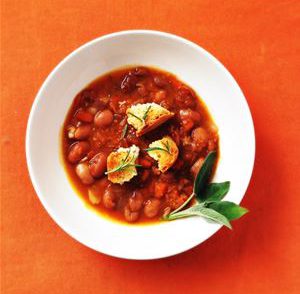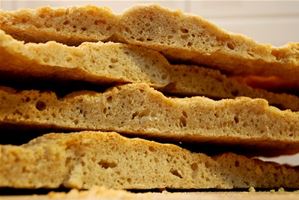‘Chianti,’ one of the most famous words in the wine world today, is the source of much confusion. Maybe you tasted a great Chianti wine at a restaurant but when you later bought a bottle of Chianti, it just didn’t taste the same. Or perhaps you tasted a Chianti Classico Riserva DOCG, bought a Chianti DOCG and can’t figure out the difference. Are you on the trail of a Chianti DOCG or a Chianti Classico DOCG? And would that be from Panzano or from Gaiole? Or are you looking for a wine named Gaiolé (notice the accent mark)? Well, that one isn’t either a Chianti or a Chianti Classico but a Toscana IGT; Gaiole (no accent mark) is the name of one of the first Chianti wine-producing areas, renowned for its wine in the 1700s. Or perhaps you just want to drink a nice glass of wine from Florence and its surrounding area and would like to know what to choose?
The Consortium of Chianti Classico presented some important news at the press world’s official preview of the Chianti Classico 2009, 2008, and the Chianti Classico Riserva 2007 debuting at the Stazione Leopolda in Florence on February 16 and 17, where I was with more that 200 journalists from around the world, announcing that after only 78 years (or 626 years, depending on when you start counting) something serious can happen in Italy. The official and clear split of the two wine denominations Chianti and Chianti Classico is finally happening.
Clearly, a little bit of history is in order. The year 1384 saw the founding of the Lega Chianti by winemakers in three zones in the hills above Florence to differentiate themselves from the winemakers of Siena. In 1716, the then grand old duke of Tuscany, Cosimo Medici III, recognizing the great potential of making wine in these areas of the Tuscan countryside, decreed a law designating the areas for producing a wine to be named ‘Chianti.’ Those wines are the ‘real thing,’ the original. The law outlived Cosimo III by some 200 years, until 1932, by which time Italy had become a kingdom-but not yet a republic. Only in 1932 did the wine-making regions begin to differentiate themselves into the wine zones as we know them today.
Keep in mind that ‘Chianti Classico’ is a separate DOCG denomination of the Chianti DOCG wine-growing area. To put it simply what this new law means is that the Chianti Classico DOCG area can no longer produce also wines named Chianti DOCG.
The black rooster, the Gallo Nero, has been used as a symbol in the Chianti region from as early as the founding of the Lega Chianti. In 1924, it became the symbol of the Chianti Classico Consortium, and a mere 81 years later, in 2005, it became the official symbol for bottles of Chianti Classico DOCG wine.
In its origins, Chianti wine was made with a percentage of white wine. Mind you, written records follow hundreds of years after the first production of the wine called ‘Chianti.’ The first written recipe, dating from the middle of the nineteenth century, calls for ‘more or less’ 15 percent Malvasia Bianca, with 70 percent Sangiovese and 15 percent Canaiolo. Sometimes Chianti wines were produced with up to 30% white wine.
Now a new law is going into effect for Chianti Classico, a world breakthrough after ‘just’ 78 years of lotta. This new law will ensure that only Chianti Classico is produced in the designated region, the original area, and it will be clearly differentiated from those generally called ‘Chianti.’ Thus, only those grapes grown in the Chianti Classico region can become part of a bottle of wine called ‘Chianti Classico DOCG.’ These wines will be distinguishable by the Gallo Nero on a little pink ribbon around the neck of the bottle.
And what’s inside that bottle? Here’s what you might look for in Chianti Classico:
Chianti Classico DOCG must contain a minimum of 80 percent Sangiovese grapes; the remainder can be a mix of Canaiolo, Colorino, Malvasia Nera, Cabernet Sauvignon, or Merlot, however a maximum of 100 percent Sangiovese grapes. Chianti Classico DOCG is generally a dry red wine. Its colour is ruby red and its taste is intense and fruit driven.
Chianti Classico Riserva DOCG is made from a selection of the best grapes from the harvest. The minimum alcohol content is 12.5 percent. The wine must mature for a minimum of 24 months, of which at least three months must be ageing in the bottle. Chianti Classico Riserva DOCG is usually more structured; has a deep, dull red colour; is more complex with rich, red fruits, plum, earthy tones and even sometimes chocolate, tobacco and liquorice notes. It tends to be well rounded and have a smoother finish.
IGT stands for ‘Indicazione Geografica Tipica’
DOC stands for ‘Denominazione di Origine Controllata’
DOCG stands for ‘Denominazione di Origine Controllata e Garantita’
Chianti DOCG is a Tuscan wine denomination
Chianti Classico DOCG is a separate (now properly separate) wine denomination within Tuscany
ALLA SALUTE!
RACHEL’S PICKS
My personal choices of Chianti Classico wines tasted at the Chianti Classico Collection World Preview at the Stazione Leopolda in Florence, February 16 &17, 2010
Principe Corsini, Fattorie le Corti Anteprima Le Corti 2009
(95 percent Sangiovese, 3 percent Colorino, 2 percent Canaiolo)
Casa Emma Chianti Classico DOCG Casa Emma 2008
(90 percent Sangiovese, 5 percent Canaiolo, 5 percent Malvasia Nera)
Querceto di Castellina Chianti Classico DOCG L’Aura 2007
(95 percent Sangiovese, 5 percent Ciliegolo)
Casa al Vento Chianti Classico DOCG Aria 2007
(100 percent Sangiovese)
Barone Ricasoli Chianti Classico DOCG Brolio 2007
(Sangiovese with small amounts of Cabernet Sauvingnon and Merlot)
Il Poggiolino Chianti Classico Riserva DOCG Le Balze 2001
(95 percent Sangiovese, 5 percent Colorino)
Join the hunt!
With the new law in effect, the Chianti Classico Consortium is sending out its very own 007s to seek out fraudulent bottles of ‘Classico’ in wine stores and on supermarket shelves around town. If you think you have found a bottle that was illegally labelled, go to http://www.chianticlassico.com/, click on ‘hunting the bottle’ and when the window with ‘traceability’ pops up, enter the serial number on the pink ribbon at the top of the bottle and the other information requested. You can also use the consortium’s sms service: send a message to 366/3333603 and the consortium will get back to you.
Just when you thought you had it figured out…
In Italian, the bottle used historically for Chianti wines is called a ‘fiasco,’ whereas according to The Everyday Oxford Dictionary, ‘fiasco,’ which came into English through French, means ‘a complete and ludicrous failure in something attempted.’ But then again, in Italian, ‘fare fiasco,’ which once meant ‘to make a bottle,’ now means to come a cropper (to fail completely).







